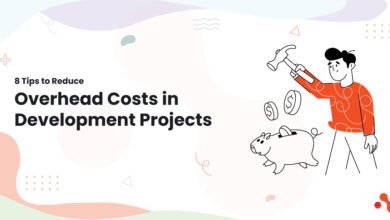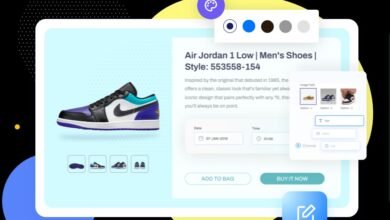How much does Progressive Web App development cost in 2024

Introduction
Due to its ability to provide an app-like experience on the web, Progressive Web Apps (PWAs) are becoming a more and more popular option for organizations looking to improve their digital presence. They are perfect for raising customer happiness and engagement since they are quick, dependable, and entertaining. However, there are a number of variables involved in creating a PWA that may affect final expenses.
The main variables influencing PWA development costs, as well as their technical aspects and cost-saving strategies, will all be covered in this article. So let’s get the conversation started. Let’s start by defining PWAs, or progressive web apps.
What are Progressive Web Apps?
A progressive web app is an application which is built with the help of some web platform technologies, but ensures that it delivers a user experience like a platform-specific application. Moreover, these PWAs would combine top-notch features of both a website and a mobile app.
Similar to a website, a PWI web app can run on different platforms and devices from a single codebase. Moreover, it can be downloaded on a device, can be operated and worked in an offline way and in the background as well. Progressive Web Apps can also be integrated with various devices and with other installed applications.
Progressive Web Applications (PWAs) have transformed how users interact with web applications by allowing downloads to home screens, enabling push notifications, and supporting offline functionality.
These advancements are facilitated by recent improvements in browser technologies along with the Cache and Push APIs. The market for PWAs is expected to burgeon, with projections estimating it will reach a value of $10.44 billion by 2027, expanding at a compound annual growth rate (CAGR) of 31.9%.
Now, let us understand what are the Factors that affect the cost of PWI applications.
Factors affecting PWA Development Costs
Feature Complexity
The complexity and range of features you plan to include in your PWA can significantly impact the cost. Advanced functionalities like offline mode, background sync, or integration with native hardware features require more development effort.
Businesses should prioritize features based on user needs and potential ROI. Implementing core features first and gradually adding more complex functionalities can help manage development costs effectively.
Design and User Experience
The design of a PWA not only influences user engagement but also affects the development cost. A more sophisticated user interface (UI) requires additional resources and skilled designers to ensure the app is both attractive and functional.
Opt for a responsive, mobile-first design that aligns with existing web assets to reduce costs. Using UI frameworks and pre-designed templates can also decrease the time and expense involved.
Development Team
The choice of developers whether in-house, freelance, or outsourced will also affect your project’s cost. The expertise, location, and size of the team play crucial roles in determining the expense.
Outsourcing to countries with lower labor costs can reduce expenses but may add complexity to project management. Ensure that the team you choose has experience with PWA development and can deliver high-quality results.
Now, further let us understand the Technical components of PWAs
What are the Technical components of PWAs?
Service Workers
Function: Service workers are scripts that run in the background, separate from the web page, and enable capabilities such as push notifications, background data syncing, and offline web experiences.
Impact: They are crucial for creating a reliable and engaging user experience, even when network conditions are poor.
Web App Manifest
Function: The Web App Manifest allows users to add your PWA to their home screen and ensures it loads quickly. It defines the appearance of the app, its start URL, and orientation preferences.
Impact: This component is essential for ensuring that the PWA feels like a native app.
Application Shell Architecture
Function: This design concept ensures reliable performance by loading the main UI shell of the PWA from a cache, enabling instant loading times during repeat visits.
Impact: It enhances the user experience by providing a consistently fast and responsive application.
Scalability and Maintenance of PWAs
Scalability Considerations
A Progressive Web App should be capable of having an architecture that would scale both in number of users and evolving features without degradation of performance. This scalability is very critical since, as your user base grows, the app remains efficient and responsive. Consider using a modular architecture so that you will be able to scale components independently based on demand.
Maintaining PWAs
The regular maintenance of the PWA includes updating it to the latest standards in web development and security. This will involve periodic service worker, app shell updates, and its content so as to avoid vulnerabilities and improve functionality. Integrate automatic tools that make the update process easier while keeping service workers efficient. Efficiency in service workers is critical for offline capabilities and cache management.
Benefits
High Scalability:
A scalable PWA will exhibit minimal performance degradation with increased load.
Future-proofing:
Run a continuous cycle of updates to make it work on new browsers and devices, thus extending its life cycle.
Integrate with Emerging Technologies
Make use of AI and Machine Learning
Artificial intelligence and machine learning integrated with PWAs can customize user experience and optimize operations. This might include predictive typing, personally curated feeds, and smarter notifications, among others, to improve user engagement.
Make Use of IoT Devices
PWAs can communicate with IoT devices using APIs seamlessly. This type of integration is useful in a lot of domains, such as applications for health metrics monitoring and home automation systems, among others, given real-time access and control over IoT devices via familiar web interfaces.
Benefits
Personalization of user interactions:
AI could use its analysis of user behavior to adjust experiences to individual satisfaction and make changes that matter to improve retention.
More Functions:
Interacting with IoT devices lets PWAs act as a central point for managing additional functionality, increasing the value derived from both the web app and the devices.
Now, let us understand some tips to optimize PWA Development Costs.
Tips to Optimize PWA Development Costs
Leverage Existing Technologies
Strategy: Utilize existing web technologies and assets. If your business already has a responsive website, you can build on that foundation, adapting its elements for the PWA.
Benefit: This reduces the need for additional resources and can significantly cut down development time and costs.
Adopt a Phased Approach
Strategy: Implement a minimum viable product (MVP) first. Launch your PWA with essential features and gather user feedback to inform further development.
Benefit: This approach allows you to test the waters before fully investing in more complex features, reducing financial risk.
Continuous Testing and Iteration
Strategy: Regularly test and update the PWA to enhance its functionality and performance. Use analytics to understand how users interact with the app and identify areas for improvement.
Benefit: Continuous improvement helps in retaining users and reducing churn, which can be more cost-effective than addressing problems after they have caused significant user dissatisfaction.
Now, let’s see how we can help in Building Progressive Web apps?
How can Acquaint Softtech help you in building Progressive Web apps?
Acquaint Softtech is an Indian company headquartered in Ahmedabad that specializes in IT staff augmentation and software development outsourcing. The company is a pioneer in software development delivering custom software solutions to a global clientele, the company also is an official Laravel partner and Bagisto development company.
Moreover, they also provide MEAN stack development and MERN stack development services and specialize in different industries ranging from eCommerce, Real Estate, FinTech, etc. Any organization that falls short of skilled developers can hire remote developers from Acquaint Softtech at just $15/hour.
The company aims to set the standard for innovation and ethics in the sector, consistently producing outstanding value and long-lasting effects for customers, partners, and society at large.
Let’s wrap up the discussion.
Wrapping Up!
At the end, PWAs are dynamic developments in web development that give businesses the power to mix flexible websites with app-like features. As has been noted throughout this post, a decision to develop a PWA is tasked with being warranted by various factors affecting both initial investment and long-term success.
The overall cost of PWA development will lie in the features developed. Only core features that can bring functionalities closer to users and return a good investment should be focused on by the business. Besides, responsive and user-friendly interfaces can engage users and reduce development time, hence the cost. Other strategies, such as building off of existing technologies and a step-by-step approach—start with an MVP—are ways to drive down costs while bringing in vital user feedback.
The technical level, with components such as Service Workers, Web App Manifests, and Application Shell Architectures, drives PWAs to deliver seamless experiences that include offline capabilities and fast loading times. Scalability and maintenance considerations also underscore the need for a robust development strategy that shall have contemplated future growth and technological advancement.
The cost of the project and the overall success are also determined by the experience of the developers, either in-house or outsourced. Take, for instance, Acquaint Softtech, which offers customized services in regard to the development of PWA, focusing on cost-effectiveness while ensuring quality measures.
In the near future, the emerging technologies such as AI and IoT will make PWAs more powerful, personalized in terms of user experience, and expanded across several fields.
Essentially, even though the starting cost of developing a PWA may vary according to a number of factors, it is the strategic deployment of these resources and technologies discussed in this paper that will empower an organization to take advantage of the emerging market of PWAs, thereby propelling customer satisfaction, engagement, and continuous growth in business.




